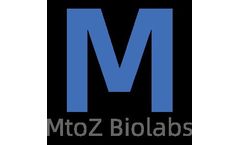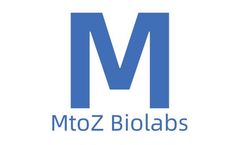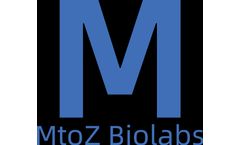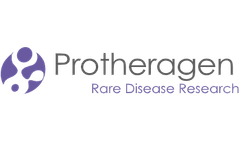Human Waste Into Disease Articles & Analysis: Older
66 articles found
Recombinant protein drugs refer to protein products that originate from animals and plants and are developed through biotechnology research. These protein drugs exhibit certain biological activity and can prevent, diagnose, and treat diseases in humans, animals, and plants. Compared with small molecular drugs, recombinant protein drugs offer advantages such as high activity, high specificity, and ...
Knockin cell line generation represents a pivotal advancement in genetic engineering, providing vital tools for biological research and therapeutic development. This process involves the integration of specific DNA sequences into precise loci within the genome, allowing scientists to explore gene function, model diseases, and develop new treatments. Understanding Knockin Cell Line Generation At ...
Cell culture is one of the major technologies in the life sciences. It is a general term used to remove cells, tissues or organs from animals or plants and place them in an artificial environment conducive to their survival and/or proliferation. The basic environmental requirements for optimal cell growth are: controlled temperature, substrate for cell attachment, appropriate growth medium and ...
Recombinant protein drugs refer to protein products derived from animals or plants and developed through biotechnology research. These proteins possess certain biological activities and can prevent, treat, and diagnose diseases in humans, animals, and plants. Compared to small molecule drugs, protein drugs have advantages such as high activity, high specificity, and low toxicity, making them ...
What is Gene Knockout Technology?Gene knockout (Gene Knockout) is a molecular biology technique that allows researchers to block or shut off the function of a specific gene to study its role and importance. This technique is achieved by introducing mutations into the gene, making it impossible for the gene to express properly or produce functional proteins.Applications of Gene Knockout ...
Autophagy is an intracellular system that degrades cytosolic proteins and organelles. Autophagy can be divided into three groups: macroautophagy, microautophagy and chaperon-mediated autophagy (CMA). Macroautophagy is most extensively studied and best known among the three pathways. When macroautophagy is induced, an isolation membrane encloses a portion of cytoplasm, forming a characteristic ...
Recently developed CRISPR/Cas9-based screening methods have great potential for revealing the mechanisms and treatment strategies of human diseases, but there are still some biological studies that are not suitable for CRISPR knockout screening. CRISPRa and CRISPRi screening opens up many new possibilities. CRISPR/Cas9 PlatformCB provides custom libraries for any set of genes of interest, as well ...
Genomic engineering in cell lines is a versatile tool for studying gene function, designing diseases models, biopharmaceutical research, drug discovery and many other applications. CRISPR (Clustered Regulatory Interspaced Short Palindromic Repeats)/Cas9 systems is a newly developed yet the most popular method for genome editing. It has been widely used in current biology, functional genome ...
Cellular metabolism is the general term for the ordered series of chemical reactions that occur within cells to sustain life. These reactive processes allow organisms to grow and reproduce, maintain their structure, and respond to the external environment. Metabolism is usually divided into two categories: catabolism, which breaks down large molecules for energy (e.g., cellular respiration), ...
Structure of Matrix Metalloproteinase (MMP) Family In vertebrates, the MMP family consists of 28 members, at least 23 of which are expressed in human tissues, 14 of which are expressed in the vascular system. MMPs are usually classified into collagenases, gelatinases, stromelysins, matrilysins, membrane-type (MT)-MMPs, and other MMPs based on their substrates and the organization of their ...
Gene regulation is a complex and tightly controlled process that plays a crucial role in various biological functions, including cell growth, differentiation, and development. CRISPR technology has revolutionized the field of genetics and molecular biology by enabling precise editing of the genome. In recent years, CRISPR activation (CRISPRa) has emerged as a powerful tool for upregulating gene ...
Trillions of microorganisms live in the gastrointestinal tract, far outnumbering the body's own cells. The intestinal flora is involved in many physiological and pathological processes in the host, including digestion and absorption of food, metabolism of certain nutrients and pharmaceutical compounds, development of host immunity, intestinal inflammatory states, and more. Dysbiosis of the ...
Rare diseases, also known as orphan diseases, are a diverse group of disorders that affect a small percentage of the population. Due to their low prevalence and limited understanding, treating and finding cures for these conditions present significant challenges. However, preclinical animal models have emerged as invaluable resources for advancing research and unraveling the mysteries surrounding ...
Introduction to Microbial Epigenetics Epigenetics has been defined as the study of stable alterations in gene expression potentials that arise during development and cell proliferation, or alterations in DNA function without alterations in DNA sequence. Modern epigenetic features refer to the alteration of DNA and/or associated proteins without nucleotide sequence variance, which transmits the ...
The field of medical science has long utilized disease models, which are systems simulating the progression and expression of a disease, to better understand various illnesses. These models facilitate the study of disease pathology, identifying underlying mechanisms, and developing potential treatments. In the context of respiratory diseases, numerous models have been developed, with a prominent ...
The field of medical science has long utilized disease models, which are systems simulating the progression and expression of a disease, to better understand various illnesses. These models facilitate the study of disease pathology, identifying underlying mechanisms, and developing potential treatments. In the context of respiratory diseases, numerous models have been developed, with a prominent ...
What Are the Advantages of Single-Cell RNA Sequencing? One of the significant advantages of scRNA-seq in drug discovery is its impact on target identification. By allowing researchers to dissect complex tissues and diseases at the cellular level, scRNA-seq enables the identification of distinct cell subtypes and their gene expression profiles. This information can lead to a better understanding ...
1. Understanding animal behavior: Animal cognitive behavioral tests help researchers gain insight into how animals think, learn, and solve problems. By conducting cognitive behavioral tests, scientists can better understand the cognitive abilities of different animal species and how they compare to humans. 2. Comparative studies: Comparative cognition research is important for understanding the ...
Amplicon sequencing is a cutting-edge technique that involves sequencing PCR products or captured fragments of specific lengths, enabling the analysis of sequence variations. Among the diverse applications of this technology, the 16S rRNA gene has emerged as a fundamental tool for sequence-based bacterial analysis, boasting decades of significance. The process of 16S/18S/ITS amplicon sequencing ...
What is RNA-Seq? Regulation of gene expression is fundamental to linking genotypes with phenotypes. RNAs shape complex gene expression networks, which drive biological processes. An in-depth understanding of the underlying mechanisms of how to govern these complex gene expression networks is vital for the treatment of complex diseases such as cancer. Hybridization-based microarrays are used to ...








